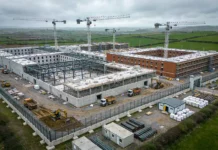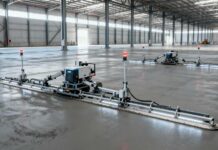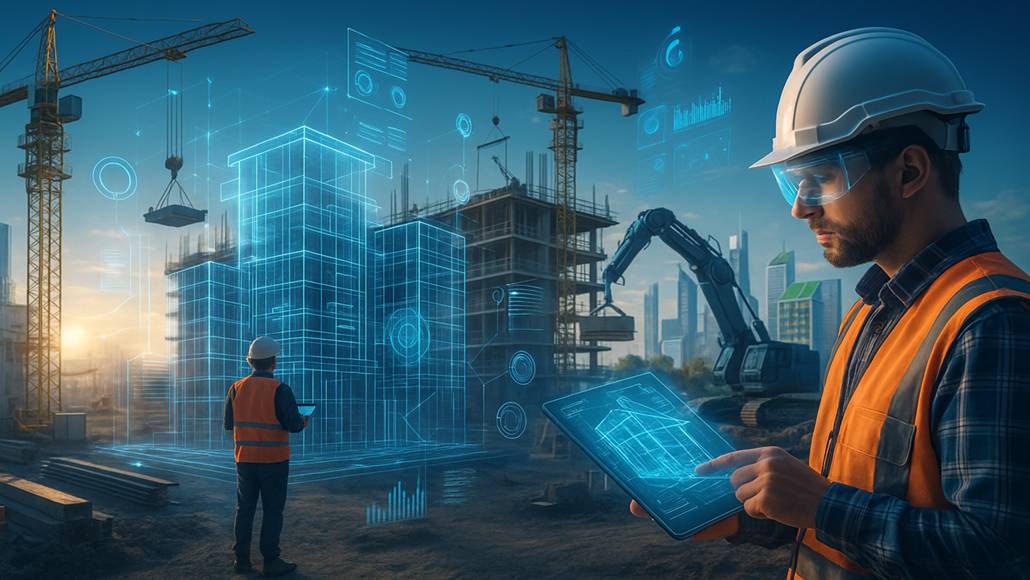In the dynamic world of construction, technological innovation constantly alters how projects are conceptualized, designed, and executed. One of the latest advancements is Building Information Modeling (BIM), which has the potential to fundamentally change the way the industry works. In the past decade, BIM has gained prominence and it is likely to continue gaining prominence for a while. This is not a passing fad, but a turning point that demonstrates the industry’s pursuit of better efficiency, sustainability, and accuracy.
The integration of BIM in construction industry provides end-to-end digital perspective that integrates design, engineering, and operation information for an entire project lifecycle. Its ability to facilitate collaboration, lower costs, and increase project effectiveness guarantees that BIM continues to lead the way in industry innovation. As we move forward in this topic, it is apparent that the superiority of BIM is largely based not just on what it can do at present but also on how greatly it can grow and adjust to meet future demands of the industry.
The Evolution and Current State of BIM
Building Information Modeling originated as a digital tool designed to enhance communication between architects and engineers but has grown to be a critical part of contemporary construction management. Building Information Modeling today involves 3D modeling, data management, and project lifecycle integration, which allows stakeholders to visualize, analyse, and simulate all details of a construction project before work is even started.
Today, the status of adoption of BIM is unprecedented, with more firms recognizing its strategic potential. The adoption of BIM is making its way into workflows of multinational conglomerates, government departments, and small to medium enterprises. According to recent industry surveys, BIM adoption continues to increase by various government mandates to rely on BIM due to regulating agencies and clients continuing to push for greener and more efficient delivery of projects.
BIM is now also used for facilities management and operational maintenance and therefore has applicability throughout the project lifecycle. BIM’s integration provides continuity for the digital twin of the asset throughout the project lifecycle and also provides tremendous advantages in the management of the lifecycle management and planning for retrofits in the future.
Usage of BIM Throughout a Construction Project Lifecycle
Building Information Modeling (BIM) is a key application throughout the entire lifecycle of a construction project, from planning to final operation and maintenance. During design, BIM enables architects and engineers to create accurate 3D models that help visualize the overall project vision during the early stages of design. The model also has important details that include materials and components of structure and systems, so that others will help to identify potential conflicts and optimize designs before any real work is done at a construction site.
During design development, BIM allows integrated multidisciplinary teams to coordinate fully integrated architectural, structural, and MEP systems. This integration eliminates errors, omissions, and rework, ensuring cost savings and shorter project durations.
BIM in construction industry gives contractors clear digital directions, enabling accurate quantity take-off, scheduling, and sequencing. BIM models are utilized by construction teams for clash detection, site logistics planning, and coordination in real time, reducing delays and minimizing materials waste.
As the project advances towards the commissioning and handover stages, BIM remains essential by being a digital twin of the finished asset. It assists facility managers and operators by giving precise information regarding building systems, maintenance schedules, and operational information. This enhances BIM’s function beyond construction, aiding building lifecycle management, renovations, as well as future upgrades.
Benefits of Using BIM
- Enables Projects Visualization in Pre-Construction Stage
A key benefit of BIM is its ability to provide very accurate realistic 3D visualizations at the start of a project. This can help clients, architects, and other users accurately envision the end product which will help with conceptualization and making more informed decisions. It is also possible to do virtual walkthroughs and simulations, so that design flaws, aesthetic issues, and operational issues can be identified and dealt with prior to construction to avoid costly changes later.
- Allows Estimating Project Costs Accurately
The usefulness of BIM’s ability to produce accurate quantities of components and materials (in the early stages of the process) leads to more reliable and precise cost estimates. Because the model connects to price databases, project teams can create detailed cost estimates, identify potential cost overruns, and assign resources. Such accuracy enables improved financial planning, minimizes budget risks, and speeds up approval processes.
- Provides Better Insights into Ongoing and Finished Projects
Dynamic data management offered by BIM in construction industry allows project teams to track progress in real-time, contrast planned with actual performance and examine post-completion project data. Such insight will reveal bottlenecks, measure performance, and enhance future project planning. It also provides an exhaustive record of the entire building process that is useful for maintenance, renovations, and facilities management.
- Improves Communication and Collaboration
BIM in construction industry provides a unified digital platform where all project stakeholders—owners, contractors, engineers, and architects—can easily collaborate. Information will be shared in a seamless manner which mitigates misunderstandings and miscommunications which lead to mistakes or delays. Collaboration results in harmonized efficiencies, rapid decision making, and working together to produce the project.
- Allows Mitigating Risks and Preventing Losses
BIM creates a detailed visualisation and simulation space which allows potential risks to be detected in advance ranging from structural collisions to scheduling complications. Clash detection software helps avoid costly mistakes on site, whilst simulating the sequence of construction reduces risks associated with logistics. Proactive risk mitigation leads to lesser delays, lower costs, and maintaining the project within scope and budget.
- Protects Health and Safety of the Construction Workers
BIM improves safety planning by simulating the sequence of construction prior to beginning any physical work. This helps identify areas of potentially hazardous employment which will allow forms of necessary site layouts, materials and access routes. The digital model can also contain safety information where workers can learn about the site layout and the hazards present, allowing for reduced accidents and a safer working environment.
- Helps in Delivering Quality Building & Infrastructure Projects
The comprehensive nature of BIM ensures high standards of quality by allowing detailed accuracy, clash detection, and quality checking during the early stages of the project. Checking and validating data in real-time increases accuracy and leads to buildings that are better quality, durable, sustainable and high-performance. BIM’s open environment also encourages innovation and best practice, thereby ultimately achieving higher quality results.
- Strengthens Facility Management and Operations
Post-construction, BIM becomes an essential tool for building maintenance and operations. The digital database includes comprehensive details of all components, system technical requirements, maintenance intervals, and guarantees. Facility managers can schedule repairs, upgrades, and routine maintenance efficiently to prolong the life of assets and minimize operational costs. Hence, BIM enables informative sustainability management processes of buildings.
The Future of BIM: Innovation and Expansion
Leaders in the industry expect to witness a continued increase for BIM solutions as technology continues to evolve, and standards of regulation shape our actions. Technology development will enhance the quality, automation of repetitive actions with AI and ML algorithms, align with optimised use of resources, and improve predictive analytics.
The availability of digital twins—virtual representations of real-world assets—further enhances the utility of BIM. Digital twins will allow the possibilities for predictive analytics, real-time tracking, and optimization throughout the lifecycle of an asset, which is yet another opportunity with BIM as an important tool for facility management. The advances in cloud computing and developing data interoperability standards will only enhance a collaborative and synchronized global supply chain and team of collaborators. With construction becoming an increasingly globalized industry, ease of data sharing will further entrench BIM’s position at the center.
Market forecast indicates that by the early 2030s, BIM will be widespread in that practically all large-scale projects will use some sort of digital modeling. Governments globally are implementing policies to make BIM a requirement, acknowledging its potential in sparking sustainable, efficient, and resilient infrastructure.
The Impact on Industry Practices
BIM’s impact is not limited to specific projects but also redefines the whole industry. Design-build methods, integrated project delivery (IPD), and other integrated models are now commonplace almost entirely because of the abilities of BIM. Integrated workflows lead to quicker delivery of projects, reduced costs, and greater quality as a result of the transition.
In addition, BIM-driven digital transformation is parallel to broader industry developments of green building and smart cities. Simulation of a building’s performance with BIM helps facilitate energy and water savings and reduces the environmental footprint which is even more proof about where it falls into sustainable development.
BIM is also opening new jobs and skill sets in workforce transformation. The skills to work with and control complex digital models and take control requires skills in data analysis, programming and visualization, which is causing educational institutions and organizations to innovate their curriculums and training.
Conclusion
BIM will reign supreme in the construction industry, as it offers only the best platform for collaboration, maximizing overall project performance, and relative sustainability. BIM will only become more relevant as development continues with AI, digital twins, and cloud interoperability.
The future will witness BIM being deeply integrated into the process of project management, backed by regulatory requirements and an extremely skilled labor force. The industry’s focus on sustainability, efficiency, and resilience ensures that BIM’s influence will be long-lived, enabling a more efficient, innovative and sustainable construction industry for many years to come. The endless developments and evolution of BIM are clear indicators that its grip on the construction industry is not a transient one, long-lasting one.





























